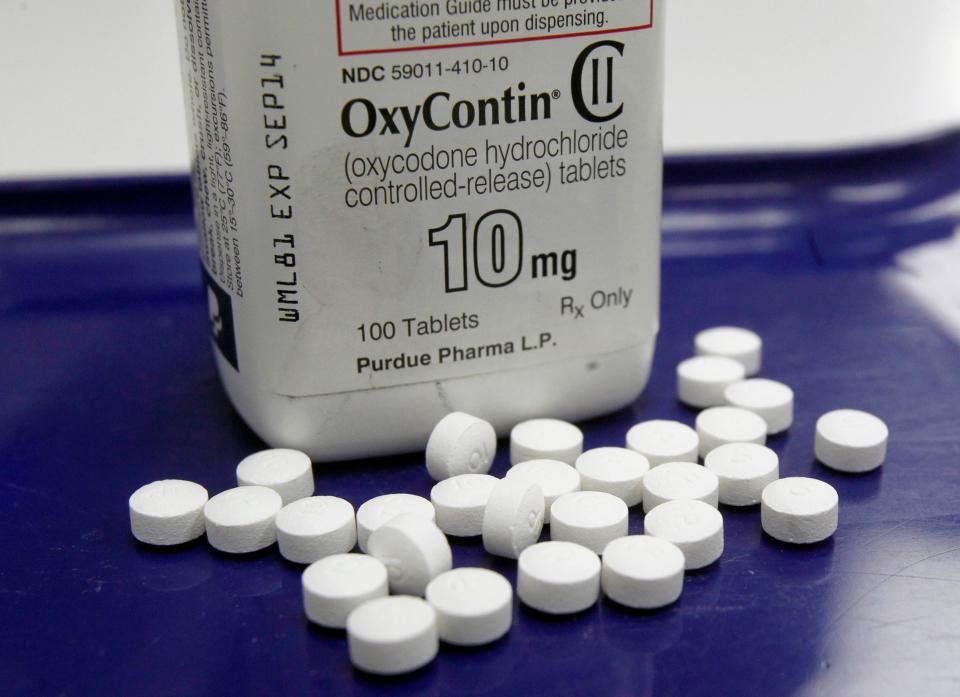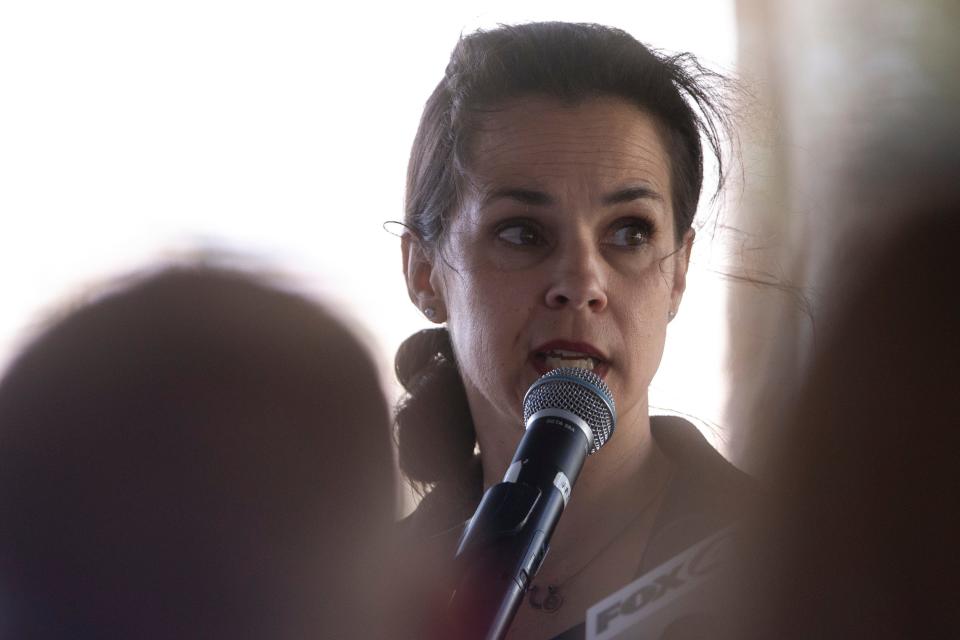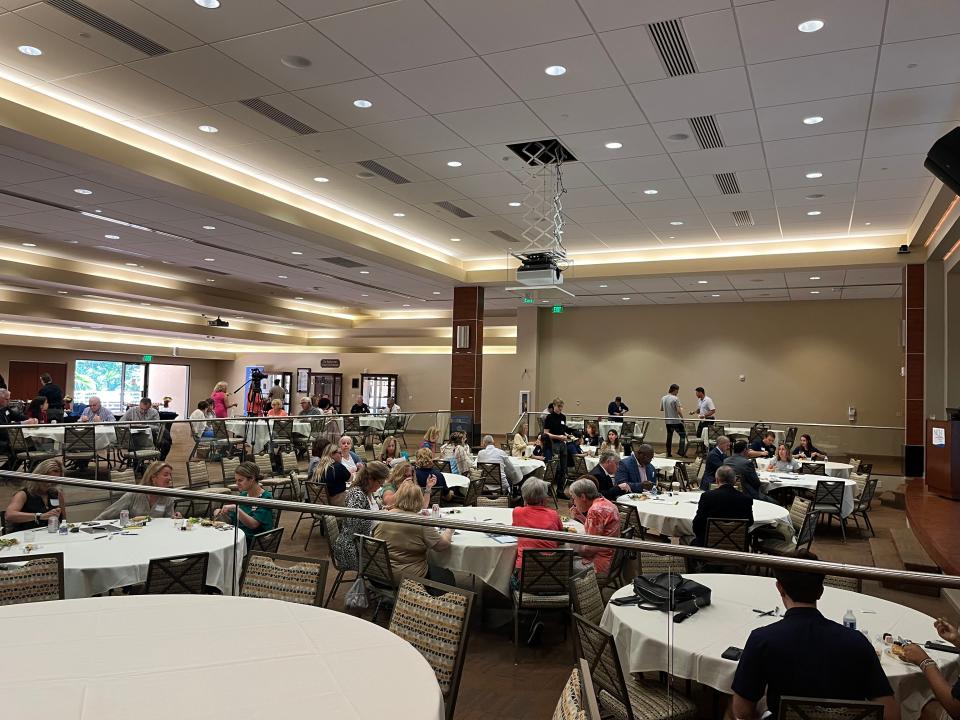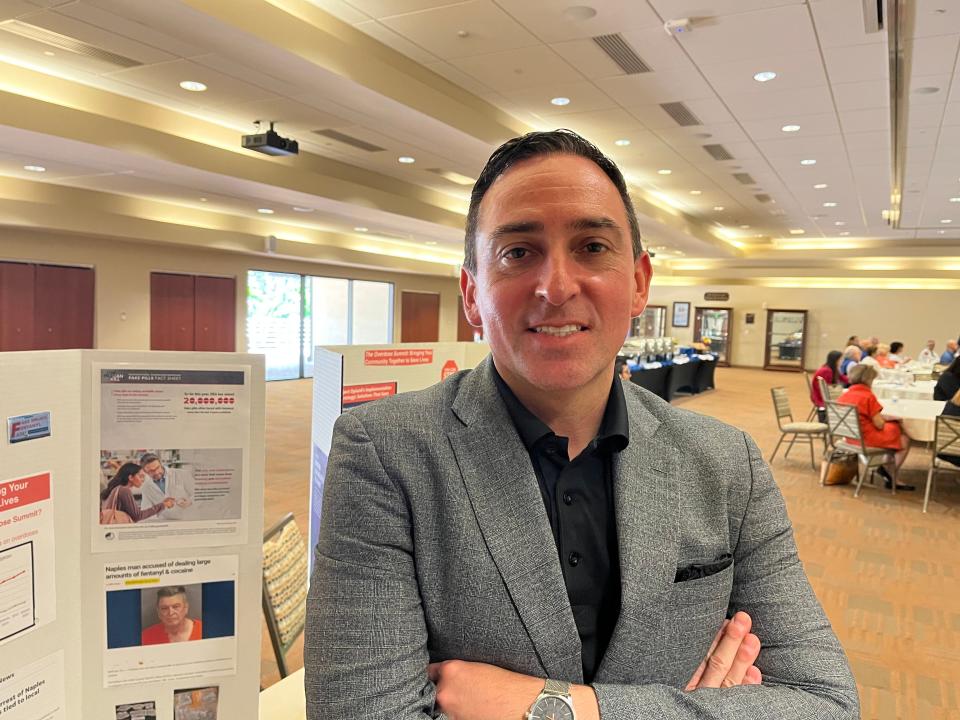How much opioid settlement money coming this way? Collier at $13M and Lee at $26M
Southwest Florida is preparing for millions in opioid settlement money to roll in from the state.
A countywide community drug response team in Collier County is finalizing a plan to tackle the addiction epidemic that led to more than 1,100 overdoses in the county last year. There were 131 overdose deaths in 2021, according to the state Department of Health.
In Lee County, the long-standing Public Safety Coordinating Council is designated as the local task force that is developing a strategy. The task force has approved two grants so far that will use local settlement funds.
EMS in Lee responded to 4,453 overdoses last year, according to state data. There were 337 fatal drug overdoses in 2021.
Florida is getting $3.1 billion over 18 years for its role in the more than $50 billion in national opioid settlements with major distributors and pharmaceutical companies for fueling the opioid epidemic.
More: Naples opioid summit: fentanyl destroys lives, can destroy community
More: Public health agencies distributing Narcan in SWFL to help stop opioid overdoses
Gov. Ron DeSantis signed legislation June 19 creating the Opioid Settlement Trust Fund in the state Department of Children and Families. Settlement dollars to local governments are in a regional fund with the state calculating annual distribution. A separate amount is paid directly to counties.
Collier’s combined estimated share is $13 million over the 18-year payout; Lee's share is $26 million, according to a settlement portal by the State Attorney General’s Office. Cities also receive smaller payouts.
Florida’s opioid addiction crisis has steadily worsened since 2000. And now communities are grappling with a much more lethal fentanyl onslaught. It is a synthetic opioid 50 times stronger than heroin.
Over a five-year period from 1999 to 2014, Florida’s age-adjusted mortality rate for opioid deaths was 6.8 per 100,000 population, exceeding the national rate of 5.8 per 100,000 population. That's according to 2016 drug policy advisory report under then-Gov. Rick Scott.

It is much worse today; the age-adjusted mortality rate jumped to 37 per 100,000 population in 2021, according to the U.S. Centers for Disease Control and Prevention. That ranked Florida as 15th among the states for opioid deaths.
The death tally statewide was 8,093 in 2021, according to state Department of Health data. More than 105,000 overdoses occurred.
What is CORE?
The state last fall announced a statewide framework for fighting opioid addiction, called Coordinated Opioid Recovery, CORE, that will roll out statewide.
The initiative aims to eliminate the stigma of addiction and treats substance abuse as a disease. It uses a continuum of care model and peer navigators in locally based networks to disrupt the revolving door of addiction.
The program is billed by the state Department of Health as “the first of its kind in the U.S. and places Florida as a leader in sustainable addiction recovery” even though CORE was just unveiled last September. It is launching in 12 counties and statewide rollout will follow.
The 12 counties are Duval, Manatee, Pinellas, Gulf, Brevard, Volusia, Citrus, Flagler, Clay, Pasco, Marion and Escambia counties.
The “connected care model” involves specialized hospitals and what’s called “community paramedicine” to connect with high-risk individuals, according to the plan. Peer navigators will provide short and long-term support.
Another element is “sustainable recovery” through medication assisted treatment, known as MAT, mental health support, primary care and social services, according to the plan.
More: As Florida fentanyl deaths surge, state leaders and advocates disagree how to fight overdoses
Related: Report: Fentanyl outpaces other opioids in overdose deaths throughout Southwest Florida
How far along are the local plans?
Even though Collier is not one of the 12 launch counties, the local drug response team looked at what Collier needs to do for the CORE approach to work, said Nancy Dauphinais, chief operating officer at David Lawrence Center. The nonprofit operates the bulk of substance abuse beds in Collier.

Following an assessment of what’s missing locally, a detailed plan is nearly finished, she said.
“It’s a pretty robust plan,” she said. “We are aligning with the state’s model. A lot of individuals are working very hard to move this forward.”
Once finalized, the plan will be presented to the Collier County commission, although the elected board does not have to sign off on it, said Capt. Anthony Maro, of the county’s Emergency Medical Services. Maro heads up the community drug response team.
“Our strategies and objectives, our action plan, is very extensive,” he said.
The draft plan is in the county’s hands and “is not in a form that can be released at this time,” according to county spokeswoman Debbie Curry. There is no scheduled date for it to be presented to the commission.
How much of Collier's opioid settlement money will be available for different action steps has not been decided, Curry said.
Narcan and medication assisted treatment are critical
Some key elements in the Collier plan involve making Narcan more readily available than it is now, Dauphinais said.
Narcan is a medication that reverses the effects of an opioid overdose and restores breathing and consciousness within minutes.
It can be administered by someone who is not a healthcare professional, including family or friends of addicts.
Last year the state rolled out free distribution of Narcan at county-level health departments to anyone with no questions asked.
David Lawrence in Collier and SalusCare, a nonprofit mental health and addiction treatment organization in Lee, have been giving out Narcan for years.
Other key elements will involve expanding medication assisted treatment so there is no lag time between doses, Dauphinais said.
Medication assisted treatment, such as with buprenorphine, relieves withdrawal symptoms and cravings for opioids.
Collier now is able to cover medication assisted treatment five days a week and the aim is coverage for seven days, she said. It has been available in local jails for a year or so through a grant, she said.
The emergency rooms run by the NCH Healthcare System are not set up yet to do medication assisted treatment, said Caitlin George, administrative director of Emergency Services and Marco Island Urgent Care. Training is needed first.
“I would hope to get it rolled out in the next six to nine months,” George said.
The emergency rooms at the publicly-operated Lee Health hospitals in Lee can provide Narcan kits when appropriate, said spokeswoman Jaclyn Bevis.
The ER physicians can write prescriptions for buprenorphine but these are not long-term prescriptions for medication assisted treatment, she said. The emergency rooms are not addiction treatment centers beyond the emergency situation.
Maro, of Collier EMS, said the agency is looking at training paramedics to provide medication assisted treatment for opioid abusers who don’t want to go to the hospital.
For addicts willing to go to the hospital, EMS will go to the emergency room and stay until the individual is connected to a peer navigator, Maro said
What’s in the Lee plan?
In Lee, the task force has focused on the continuum of care model involving outreach, prevention and diversion, treatment, discharge planning and long-term recovery to prevent relapse.
One measure will involve expanding school-based programs to provide students with skills to control mood and impulses that can lead to drug use.
Similarly the plan will expand community-based services for adults and youth with co-occurring substance abuse and mental health disorders.
Making Narcan more widely available to reverse overdoses is another strategy.
The task force put out a notice of funding for projects that are aligned with the plan and two grants have been awarded so far, according to Lee County spokeswoman Betsy Clayton.
The two are Centerstone, which operates addiction treatment centers in Lee, and Kimmie’s Recovery Zone, a local nonprofit organization.
Officials at Centerstone declined to comment until after the grant award is approved by the Lee County Commission Aug. 1.
What about fentanyl in Southwest Florida
Southwest Florida is not spared from fentanyl's sweep into communities.
In March, Naples Mayor Teresa Heitmann organized an opioid summit that was attended by roughly 75 community leaders. The event was organized with nonprofit Project Opioid based in Orlando.

Andrae Bailey, founder and chief executive officer of Project Opioid, said fentanyl is commonplace in nearly all drugs on the streets today.
Illegally-made fentanyl is mixed with other drugs and sold through illegal drug markets. Overdose deaths have spiked 18 times from 2013 to 2020, according to the CDC.
Seven out of every 10 deaths from fentanyl involve young men, Bailey said.

According to Collier EMS, there were 665 overdoses in 2022, of which fentanyl accounted for 242 overdoses, data shows.
In 2020, EMS responded to 550 overdose calls and fentanyl was responsible for 62 of the calls.
At the opioid summit, Collier Sheriff Kevin Rambosk said he believes fentanyl abuse will be the single most important fight over the next decade locally and nationwide.
The sheriff's office recently launched on its Instagram site an “F-bomb” message. The message says: “Ever feel like dropping the ‘f’ bomb on your kids? Well, go ahead.”
It goes on to say that the sheriff is “encouraging you to drop the ‘f’ bomb….f as in fentanyl, that is.”
He wants parents to have a serious conversation with their kids about fentanyl as criminal networks are flooding the market with pills laced with fentanyl to increase their profits.
Opioid and fentanyl awareness are critically important topics to the sheriff, spokeswoman Karie Partington said.
“As a team we have been working on messaging to get the attention of the community and F-bomb was one of the ideas that we thought was compelling,” she said.
Heitmann, who serves on the Collier drug response team, said another opioid summit is in the works.
“We are in the early stages of planning a parent summit with (Collier County School District) to connect to the youth,” she said.
This article originally appeared on Naples Daily News: Collier, Lee developing plans to use millions in opioid settlement money

